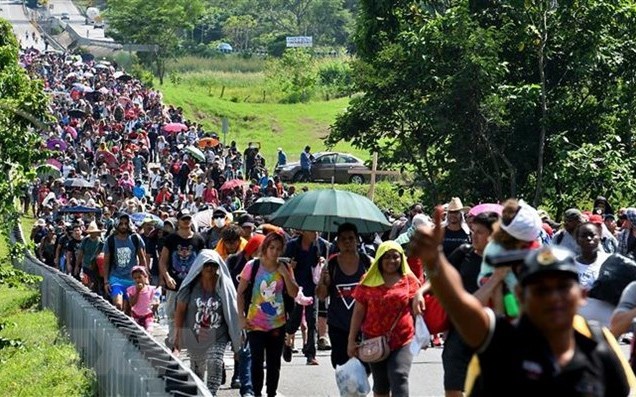Central America has recorded ‘sad records’ in terms of migration over recent months. More than 133,000 migrants crossed the Darien forest in search of the ‘American dream’ in 2021, equivalent to the same number recorded over the previous decade. In the first quarter of 2022 alone, some 13,425 migrants passed through this route, more than twice the number of 5,622 in the same period last year. The International Federation of Red Cross and Red Crescent Societies (IFRC) has sounded the alarm about challenges in humanitarian aid for migrants in the Americas.
The Darien Gap, located on the border between Colombia and Panama, has long been considered one of the most dangerous places on the planet, with its harsh natural environment, rugged terrain, and many species of wild animals and plants in addition to criminal gangs.
Ironically, many migrants, including children, accept to embark on the arduous journey in this dangerous forest to find the promised land. The United Nations Children's Fund (UNICEF) reported about 19,000 children migrated across the border between Colombia and Panama through the Darien rainforest in the first nine months of 2021 alone, an all-time high.
Food insecurity, which is a ‘serious disease’ of Latin America, has been further aggravated due to the COVID-19 pandemic and the tension between Russia and Ukraine. The Food and Agriculture Organisation of the United Nations (FAO) has warned that poverty in Latin America is at its highest level in the past 15 years. The number of undernourished people in Latin America and the Caribbean reached 59.7 million in the 2019-2020 period, 30% higher than the previous year. The vortex of poverty, violence, epidemics and natural disasters has forced the people to leave their homeland.
US President Joe Biden is forecast to continue facing serious pressure in 2022, in which the issue of migration remains a difficult problem. Since taking office, he has signed a series of executive orders reversing the tough immigration and border security policies of his predecessor. However, storms hit the new government when a wave of migrants flooded in from the southern border area near Mexico, creating great pressure on the US. The US Department of Homeland Security has admitted that the number of migrants who have reached the southwestern border is higher than at any time over the past 20 years. In the face of criticism about immigration policy, President Biden still expresses his steadfastness in his humanitarian approach and tackles the wave of migration at the starting point.
Considering that the migration issue is not one's own and requires the cooperation and mutual support of the international community, the US has deployed many investment packages in Central America to improve living conditions in the homeland of migrants. The US and Panama recently signed an agreement to strengthen the management of illegal migration in the direction of protecting migrants. A similar agreement was also signed by the US and Costa Rica in March.
Currently, the US and Mexico are actively expanding social welfare programmes in Central American countries such as Honduras, Guatemala, and El Salvador, including the “Youth Contributes to the Future” programme with the focus on providing scholarships for the youth, creating jobs, and improving the quality of education.
The United Nations High Commissioner for Refugees (UNHCR) in Honduras, Andres Celis, said the influx of migrants reflects the urgent need to improve living conditions in originating countries. Amid the complicated migration problem, the whole region needs to work together and create a unified strategy to deal with the root causes although these solutions are unlikely to show results in the short term.
















